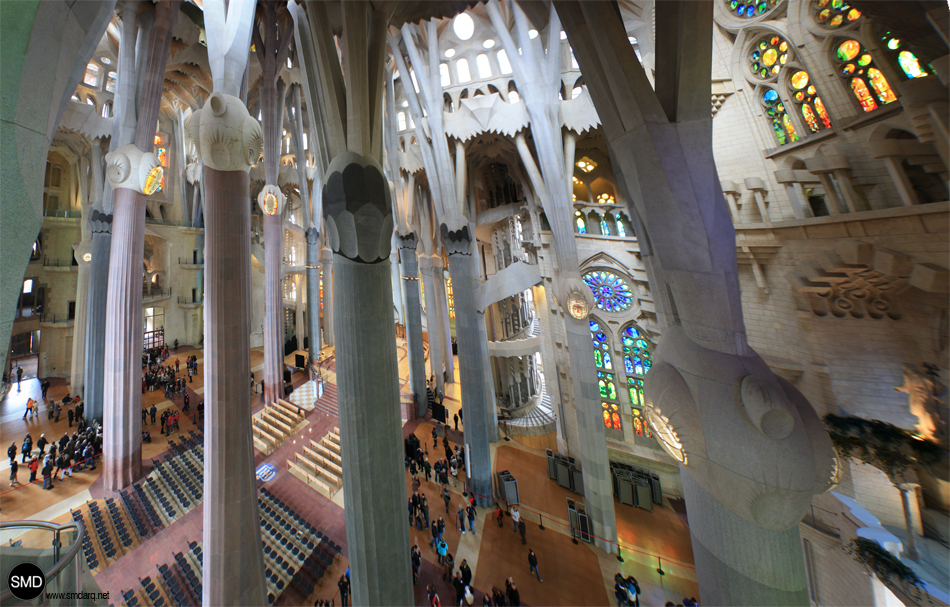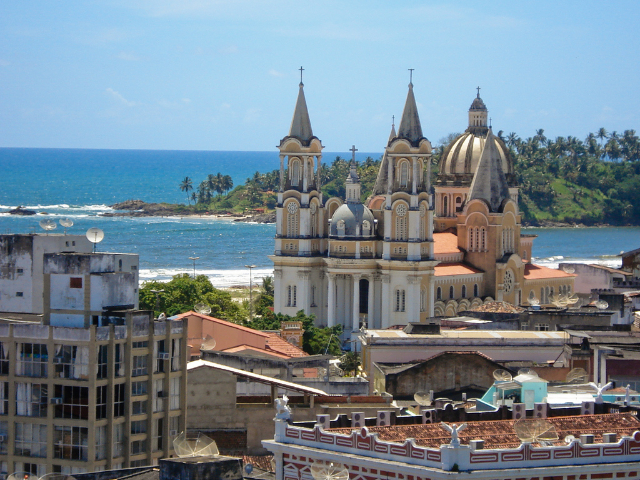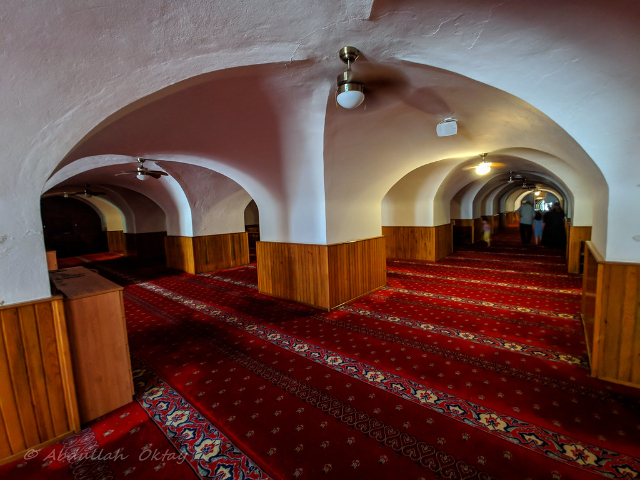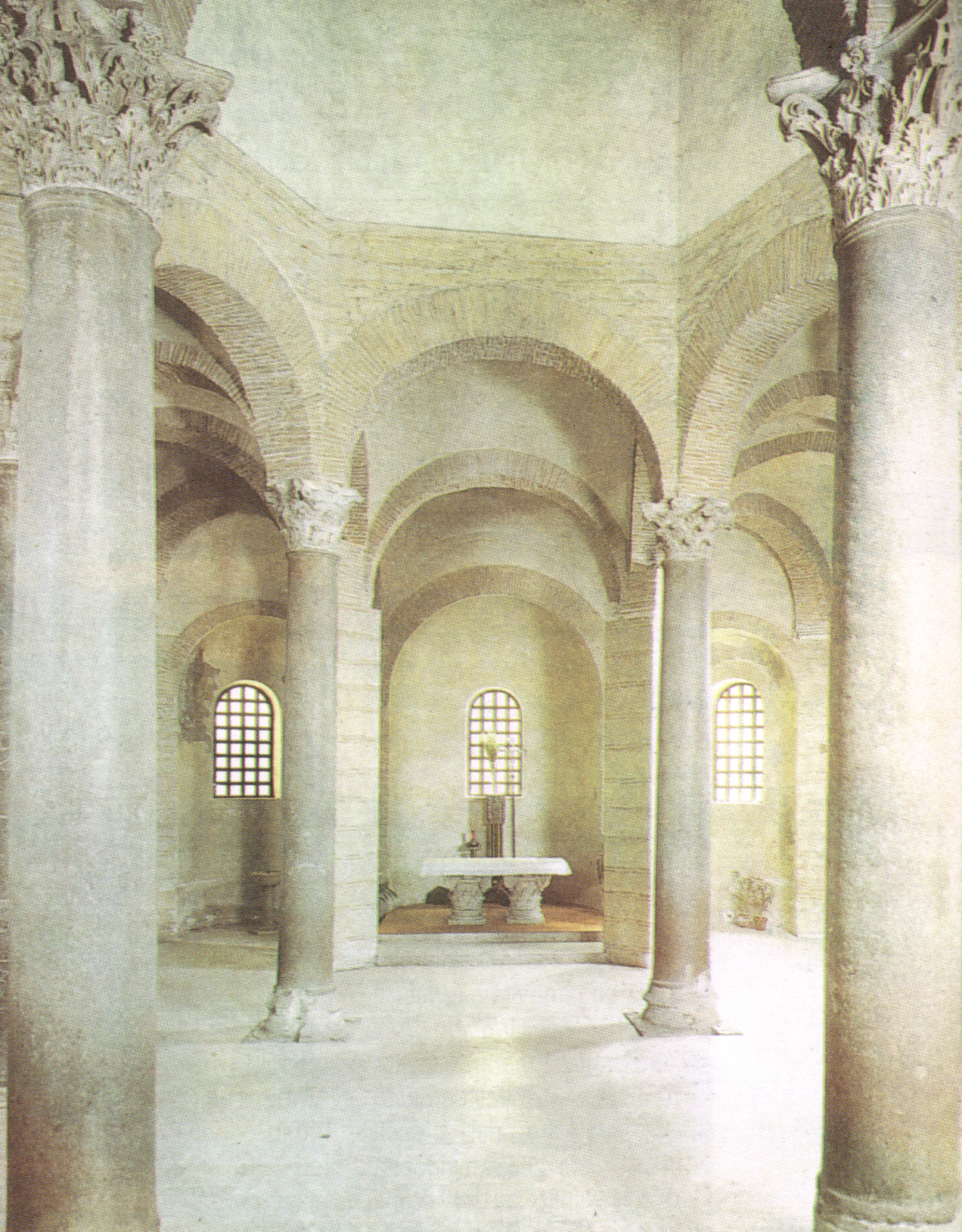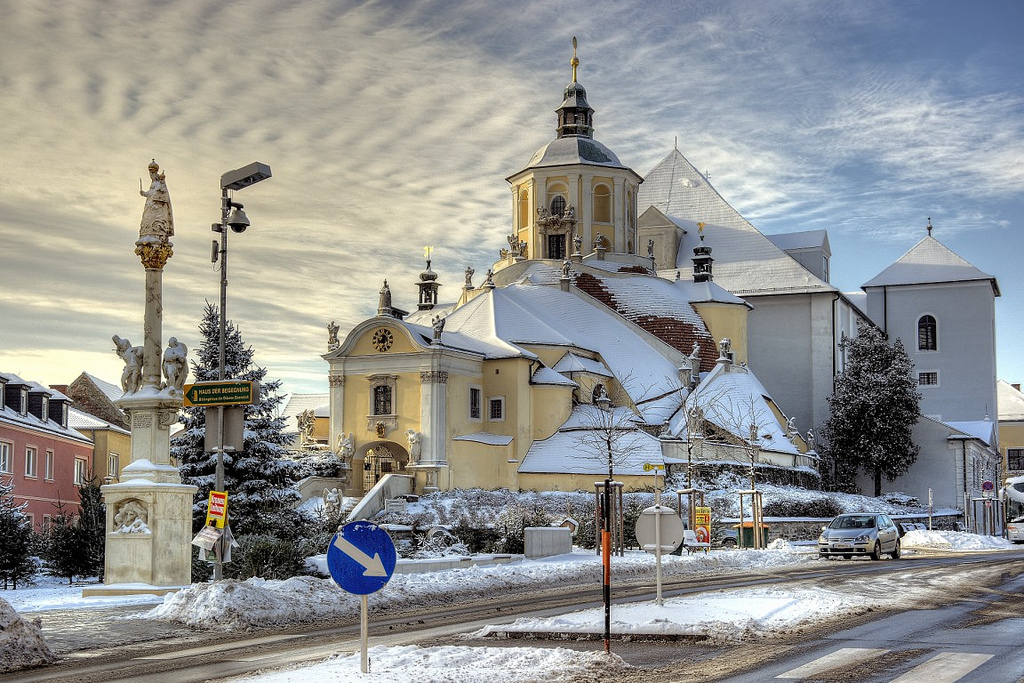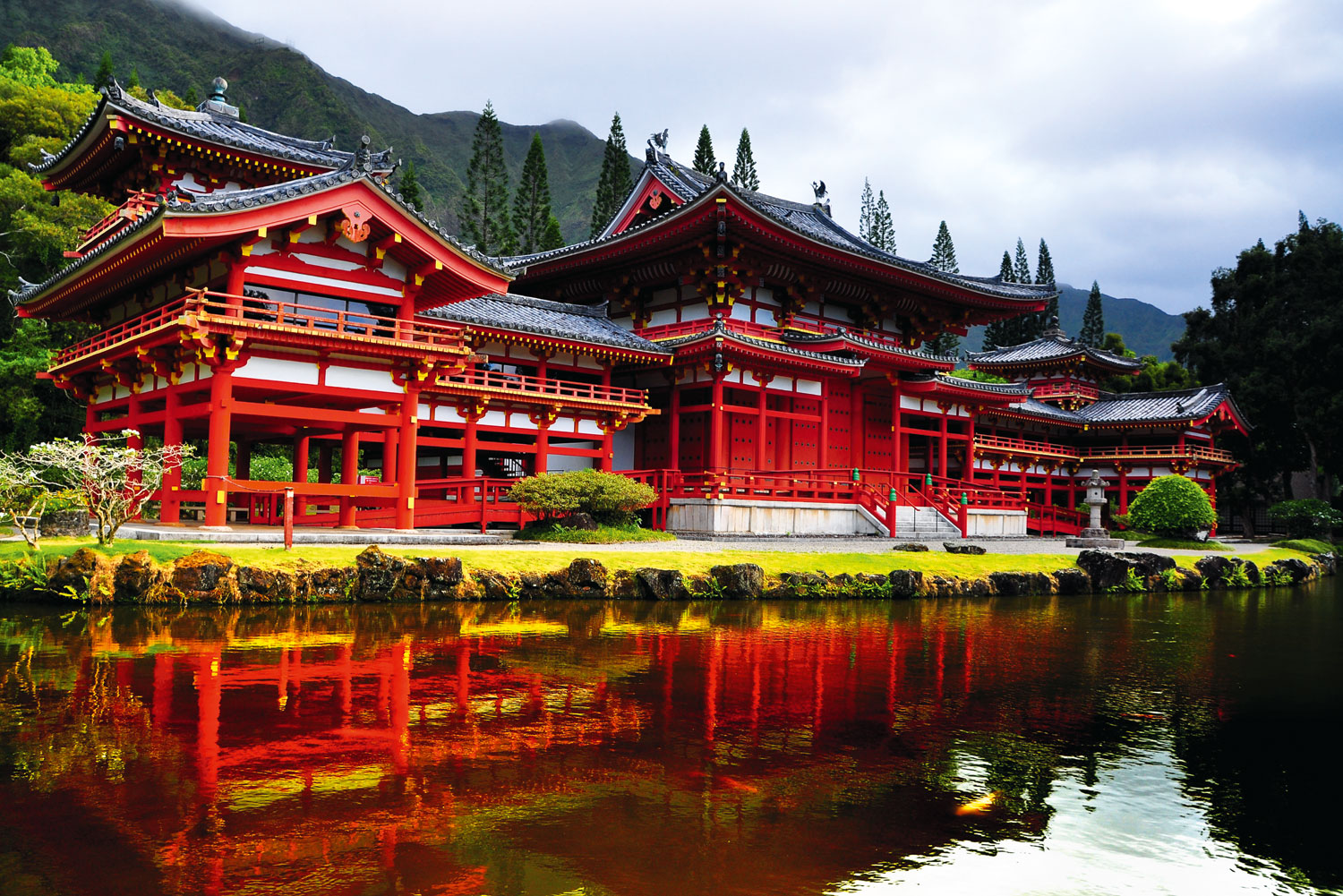The Associació Espiritual de Devots de Sant Josep, founded in 1866 with the intention of promoting the construction of a temple dedicated to the Holy Family, received donations and purchased the land on which the church now stands.
The work was to be carried out by the architect Francesc del Villar, but after disagreements with the Association, in 1883 Antoni Gaudi took over the task, who set up his studio and literally settled in the church, committing himself to the construction of the basilica with extreme dedication.
He worked on the endless project for 40 years, including the last 15 of his life. Realizing that the construction of the church would take decades, if not centuries, after his death, rather than exhausting resources by laying out the entire gigantic perimeter, the Catalan architect preferred to complete some sections of the building in height (especially in the apse), as if to leave his successors a precise testimony of the original idea.
After his death in 1926, the works continued for a short time, interrupted by the outbreak of the Spanish Civil War; they resumed from time to time in 1952 under the guidance of another architect, who changed the original project, lost due to a bombing during the Civil War.
Financed thanks to the offerings of the faithful, the construction is now progressing at a very slow pace, due to the high costs, as well as the difficulty of the project. It is estimated that the work can be completed by 2030.
Religious symbolism is the main and most intimate essence of the work of the Sagrada Familia. The Temple of the Sagrada Familia is like an open book that tells every day, the story of a Faith. Its stones, its sculptures, its strong exterior and its silent interior are so full of spirituality that will make you feel all the faith that this work brings with it.
The Temple
The exterior of the Sagrada shows the Catholic Church: Jesus, Mary, the apostles and the saints. The facades, on the other hand, represent the human life of Jesus, from his birth until his death. And inside, the heavenly Jerusalem is told, inhabited by the Lamb, the son of God. What you will notice and what will surprise you is the combination of modernism with the essence of religious architecture and Mediterranean culture, different elements that blend harmoniously into a whole, thus giving life to a unique work in the world.
The Bell Tower
The ciborium according to Gaudí, is the elevation of the Temple. The most important bell tower is the one dedicated to Jesus Christ, 170 meters high and crowned by a large cross. The peculiarity of this bell tower is its cross, which shines during the day thanks to the mosaics it is composed of and also shines at night due to the light projected by the other bell towers, on which you can read "Amen" and "Alleluia". Everything in the Sagrada Familia has been studied in detail. Next to the bell tower is the Mother of God, just as it happened in the life of Jesus always followed by Our Lady until his death. This is accompanied by the four bell towers of the evangelists surmounted by an angel, a bull, a lion and an eagle.
Facade of the Passion
This facade of the Temple is a symbol of the desolation, pain and death of Jesus Christ. It is bare, with simple forms and bare ornaments as if to demonstrate and respect the same pain of Christ. All of its architectural elements seem wrapped in absurdity: the columns that look like bones and the ornaments of flowers and animals that represent the feeling of irreversible loss caused by death. The façade of the Passion is also composed of three gates representing the theological virtues and four bell towers dedicated to the Apostles: San Jaime, San Bartomeu, San Tomás and San Felipe. At the end of the windows are the fruits of winter and autumn: chestnuts, grenades and oranges, another clear demonstration of the influence of the Mediterranean in the work.
The Sacristies of the Sagrada Familia
The Sagrada Familia has two sacristies, located in the north and west corners of the cloister. Its lanterns coincide with the cardinal points and link the virtues with the Témporas – the fasts that the Christian country does in every season – in gratitude for the fruits of the earth. Its representation is as follows: the lantern of Winter, in the North, with the snake and the piggy bank symbolizing prudence; Autumn, in the West, with a helmet and a breastplate, represents strength; the one of Summer, in the South, with a bascule and a sword, symbolizes justice. And Spring, to the east, rises to symbolize temperance, through a knife, bread and spouted jug, clear symbols of Catalan culture.
Crypt
The crypt of the Temple is covered by a dome representing the Annunciation of Mary and contains chapels dedicated to the members of the Holy Family of Jesus. It is surrounded by a mosaic depicting vineyards and wheat, the Mediterranean symbols of fertility. The high altar shows the liturgical time of Easter and in it is highlighted a relief by the sculptor Josep Llimona dedicated to the Holy Family.
Bell towers
The twelve belfries of the Sagrada Familia represent the apostles and are crowned with the episcopal symbols of the cross, mitre, ring and staff. Its vertical shape wants to be the union between earth and sky.
Facade of the Birth
The facade facing the sun is the facade of Life and Enjoyment. Its meaning is expressed by the plastic strength of the stones full of life and meaning, as a kind of miracle that is fulfilled. Its doors symbolize Faith, Hope and Charity, three important aspects of Jesus’ life, in analogy to San Jose, the Mother of God and Jesus. The four bell towers that arise from this facade are dedicated to the Apostles San Matías, San Jude, San Simón, and San Bernabé. The Gothic style of this façade is combined with modernist-style undulations, as well as naturalistic elements with typically Mediterranean-inspired flora and fauna: land tortoises, snails, ducks, roosters and owls that make the work full of vitality. This natural and vital scheme is also reflected in the windows, filled with spring and summer fruits.
Façade of Glory
This facade is oriented to noon and represents man within Creation: his origin, his problems, the paths to follow and his death. The Glory shows the consequence of sin, virtue and heaven which can only be accessed through prayer and the sacrament. This is the reason why this façade shows, in order of ascension, hell, death, virtues, the gifts of the Holy Spirit up to the top where the Trinity is located. The seven outer columns of the portico symbolize the seven gifts of the Holy Spirit. The façade of the Gloria is adorned not only with religious elements, but also with themes that relate to popular imagination, ancient mythologies and pagan themes such as the monsters that populate hell.
Central Nave
As Gaudí intended, the interior of the Temple is like a sort of natural forest. In fact, the arrangement of the columns is reminiscent of tree trunks with their branches. The light that infiltrates between the columns gives the nave a bucolic touch. The columns that support the vaults represent the Apostles and churches around the world. Of the columns that surround the transept and the apse, those of the Apostles Peter and Paul stand out, joining the triumphal arch with Calvary: an ensemble with Christ Crucified, the Virgin Mary and San Juan. The representation of the Trinity is complemented by the Eternal Father in the dome of the apse and the seven-armed lantern representing the Holy Spirit.
Be continued……..
